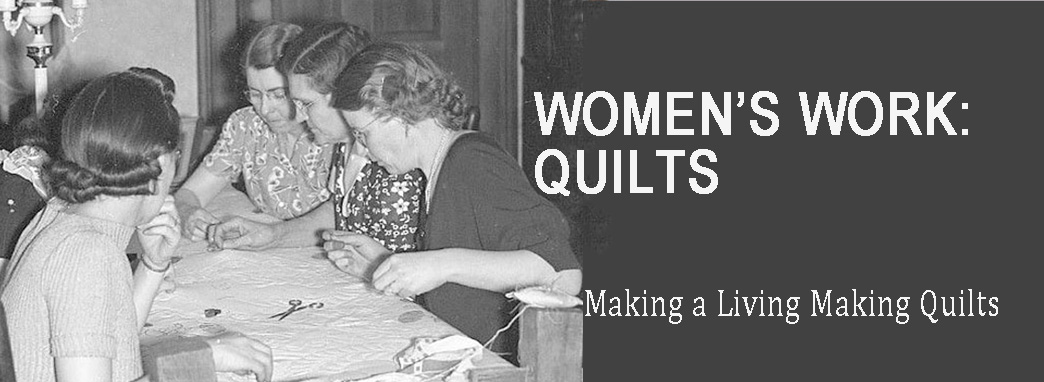Buzz Saw with Chicken Feet in the corners, early 20th century
by Docella Johnson, Bradley, Arkansas
Old State House Museum, Arkansas
Docella's quilt is featured in the Piece of My Soul Exhibit, curated by Cuesta Benberry at the Old State House Museum. The caption tells us that she was "cook and general housekeeper for the McKinney family. When she quilted, Docella arranged her quilts in a 'halves' system since the McKinney’s mother would provide the materials for two quilts, one for the McKinneys and one for her."
When interviewing quilters for the Kansas Quilt Project we heard many stories about piecing or quilting "on shares," which like sharecropping means one person has an asset (land or fabric) which is traded to another person for their labor. "On halves" would be a synonym.
One pieced on shares with another woman who supplied the fabric; you stitched two quilts. She gets one; you get one.
I found two such references in looking through the Quilt Index.
This remarkable quilt was brought to an Arizona quilt day by the daughter of the Kentucky maker. She recalled that her mother had a neighbor (husband's kin) in Kentucky who had nine children and was living in a two room cabin during the depression. This woman Arrie Ethel Boggs Wheeler (1889-1942) "offered to piece the circles with tiny triangles if [Emma Wheeler] would provide material. Emma Wheeler then put it together." Emma's daughter recalled it as made in 1937.
That's a lot of piecing of tiny points, particularly if you're making enough for two quilts. It appears Arrie's job was just the points. Emma's was stitching them into the stars and setting the blocks. The women lived in Blaine in Lawrence County along Kentucky's eastern border with West Virginia. Arrie died young at 47 during World War II.
The "old Wheeler place" in Blaine
http://www.quiltindex.org/fulldisplay.php?kid=4C-83-245
Another story from the Tennessee project concerns this string quilt top. The woman who brought it to be documented wasn't really sure of where it came from (perhaps her mother did not quilt) but she recognized the fabrics as clothing from her childhood. She guessed the "top was 'pieced on shares', with the maker returning some of the blocks to the family and keeping some of the blocks and scraps for herself." Her thinking: her mother gave the leftover clothing fabrics to another woman who made two tops, returning one, which is how the mysterious string quilt wound up in her family things.
In my quilting groups we've occasionally appliqued on shares. One person cuts and bastes all the pieces; the other sews. Two quilts.
It's hard to find any written references to this way of working, but it must have been quite common. The above article is from a Utah newspaper in 1916, which like many periodicals had a column for reader requests; this one mentions a trade.
A few weeks later.
Some of these columns are awfully sad, they seemed to have served as a place for poor, isolated women to connect. Of course, the sadder the story, the more responses, I guess.









Oh, the times, they were hard, and still are in many areas.
ReplyDelete